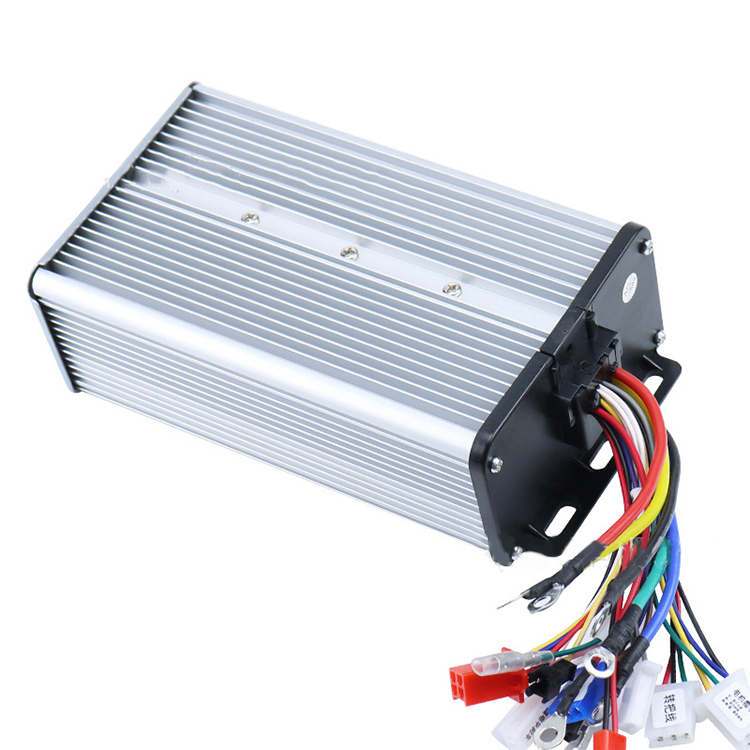With the global shift toward cleaner transportation, electric vehicles (EVs) have become more prevalent on the road. As more consumers adopt EVs for personal and commercial use, efficient and safe charging has become a critical part of the overall experience. At the heart of every advanced charging setup is the Electric Vehicle Speed Charging Controller. But with many types, functions, and specifications available, how do you choose the right Electric Vehicle Speed Charging Controller for your vehicle or infrastructure project?

The Electric Vehicle Speed Charging Controller is a device that manages how electrical energy is transferred from a charging source to an electric vehicle battery. Its primary role is to regulate current, voltage, and temperature during charging, while also communicating with both the vehicle and the grid or charging station. Without a reliable Electric Vehicle Speed Charging Controller, fast charging can battery overheating, inefficient energy use, or safety hazards.
Choosing the appropriate Electric Vehicle Speed Charging Controller isn't just about compatibility; it directly affects charging time, battery health, and energy consumption. A poorly matched Electric Vehicle Speed Charging Controller may result in longer charging sessions or stress on the battery pack, reducing its useful lifespan.
Additionally, modern electric vehicles rely heavily on communication protocols such as CAN (Controller Area Network) or ISO 15118 to coordinate charging. The Electric Vehicle Speed Charging Controller must be capable of supporting these protocols and integrating with the vehicle's onboard systems.
What Are the Main Types of Electric Vehicle Speed Charging Controller?
There are generally three categories of Electric Vehicle Speed Charging Controller based on the charging method:
AC Charging Controllers – Manage charging from AC sources, typically slower but more accessible.
DC Fast Charging Controllers – Used in high-speed charging stations, capable of rapidly charging large battery packs.
Onboard Vehicle Controllers – Installed inside the EV and coordinate with external chargers for controlled energy intake.
When choosing a Electric Vehicle Speed Charging Controller, consider whether it is intended for residential use, fleet charging, public stations, or commercial infrastructure.
What Technical Factors Should You Evaluate?
Several technical specifications should be reviewed before selecting a Electric Vehicle Speed Charging Controller:
Voltage and Current Ratings: The controller must match your EV's battery system. For example, a 400V battery pack may require a controller capable of handling at least 500V and the desired current range (e.g., 100A or more for fast charging).
Cooling Method: Some high-power Electric Vehicle Speed Charging Controller models use forced air or liquid cooling to prevent overheating. This is especially important in DC fast charging environments.
Power Conversion Efficiency: Higher efficiency (e.g., 95% or above) means less energy is lost during charging. An efficient Electric Vehicle Speed Charging Controller contributes to energy cost savings and reduced heat generation.
Communication Protocols: Ensure the Electric Vehicle Speed Charging Controller supports the same standards as your vehicle (e.g., CHAdeMO, CCS, or GB/T). Compatibility ensures seamless charging and smart energy management.
Safety Certifications: A trustworthy Electric Vehicle Speed Charging Controller should have international safety approvals such as UL, CE, or IEC compliance.
Are There Smart Features to Consider?
Yes. A modern Electric Vehicle Speed Charging Controller may include smart charging features such as:
Load balancing, which distributes power across multiple EVs to prevent grid overload.
Remote monitoring, allowing users or fleet operators to view charging status via an app or dashboard.
Dynamic power adjustment, which adapts charging speed based on real-time battery temperature or grid demand.
These features are particularly useful in commercial and fleet operations where multiple vehicles charge simultaneously, and downtime must be minimized.